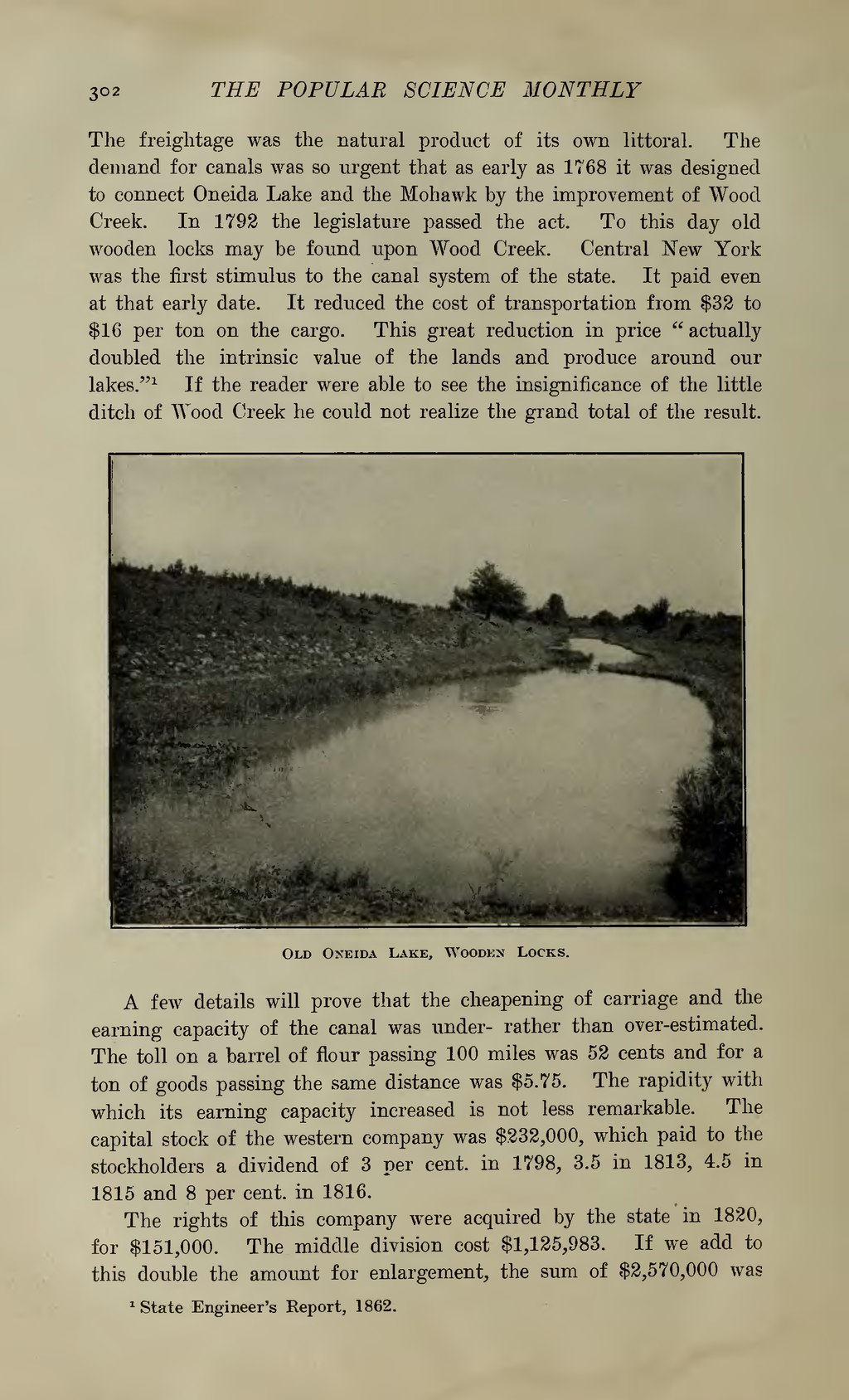The freightage was the natural product of its own littoral. The demand for canals was so urgent that as early as 1768 it was designed to connect Oneida Lake and the Mohawk by the improvement of Wood Creek. In 1792 the legislature passed the act. To this day old wooden locks may be found upon Wood Creek. Central New York was the first stimulus to the canal system of the state. It paid even at that early date. It reduced the cost of transportation from $32 to $16 per ton on the cargo. This great reduction in price "actually doubled the intrinsic value of the lands and produce around our lakes."[1] If the reader were able to see the insignificance of the little ditch of Wood Creek he could not realize the grand total of the result.
A few details will prove that the cheapening of carriage and the earning capacity of the canal was under-rather than over-estimated. The toll on a barrel of flour passing 100 miles was 52 cents and for a ton of goods passing the same distance was $5.75. The rapidity with which its earning capacity increased is not less remarkable. The capital stock of the western company was $232,000, which paid to the stockholders a dividend of 3 per cent, in 1798, 3.5 in 1813, 4.5 in 1815 and 8 per cent, in 1816.
The rights of this company were acquired by the state in 1820, for $151,000. The middle division cost $1,125,983. If we add to this double the amount for enlargement, the sum of $2,570,000 was
- ↑ State Engineer's Report, 1862.

